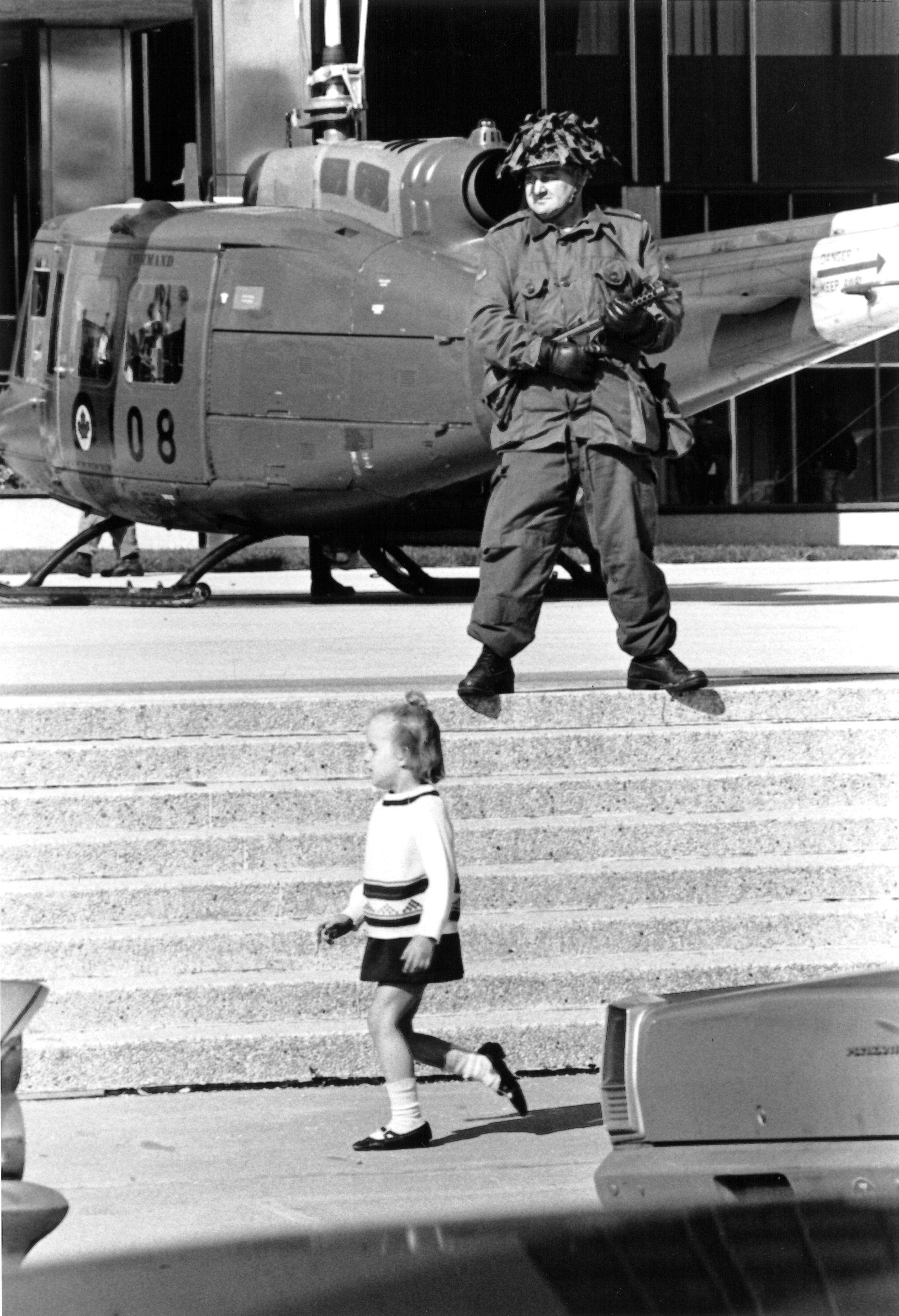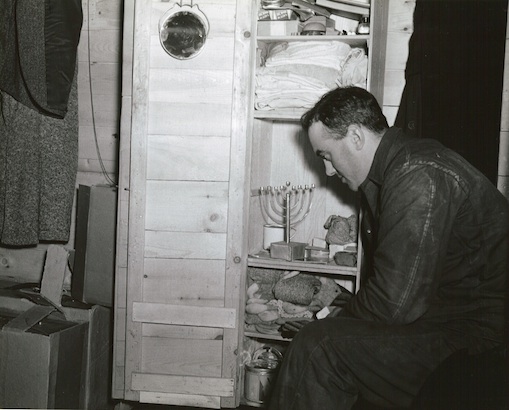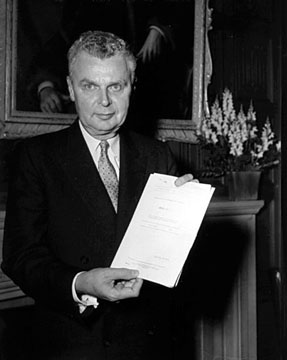
First World War
At the beginning of the First World War, the Canadian government quickly passed the War Measures Act, a law that gave sweeping emergency powers to the federal Cabinet. The Act was in force from 4 August 1914 to 10 January 1920 — the official date of the end of the war with Germany. The Act allowed Cabinet to bypass the House of Commons and the Senate and to govern by order-in-council (decree) when it perceived the existence of “war, invasion or insurrection, real or apprehended.”
The Act gave the government full authority during wartime to censor and suppress communications; to arrest, detain and deport people without charges or trials; to control transportation, trade and manufacturing; and to seize private property. As a result, the Act was used to ban 253 publications, including 222 American, 164 foreign-language and 89 leftist publications. Following the Bolshevik Revolution in Russia in 1917, socialist reading materials in particular were targeted for censure. Membership in left-leaning or pacifist organizations was forbidden. People were also arrested and interned for their political beliefs.

Internment of “Enemy Aliens” During the First World War
Thousands of civilians were interned under the authority of the War Measures Act when the government labelled them “enemy aliens.” (See also Prisoner of War Camps in Canada.) Most internees were recent immigrants from the Austro-Hungarian, German and Ottoman empires. Some were Canadian-born or naturalized British subjects. (See Internment in Canada.) Another 80,000 people, mostly Ukrainian Canadians, were forced to register as enemy aliens, to carry identity papers and to report regularly to the police.
Over the course of the war, the federal government interned 8,579 enemy aliens in 24 receiving stations and internment camps across the country. Of the total number interned, 5,954 were of Austro-Hungarian origin, including Croats, Ruthenians, Slovaks, Czechs and Ukrainians; 2,009 were German; 205 were Turks and 99 were Bulgarians. According to Sir William Dillon Otter, who was in charge of internment operations, 3,138 detainees were actual prisoners of war — meaning they had been captured or were enemy reserves. The rest were civilians.
DID YOU KNOW?
The term enemy alien referred to people from countries, or with roots in countries, that were at war with Canada. During the First World War, this included immigrants from the German, Austro-Hungarian and Ottoman empires and Bulgaria; during the Second World War, people with Japanese, German and Italian ancestry.
Internees also had their property confiscated, much of which was not returned after the war. During their internment, they were often required to work on large labour projects — such as building a portion of the golf course at Banff National Park — as well as building roads, clearing bush, cutting trails and working on logging and mining operations. They were paid less than half the daily wage offered to other labourers.

1918 Anti-Conscription Riots
The debate over conscription (mandatory war service) divided the country at the end of the First World War. ( See Military Service Act.) Eventually, riots over the issue broke out in Quebec, where support for the war had been weak. The government used the War Measures Act to quell the anti-conscription Easter Riots in Quebec City between 28 March and 1 April 1918. Martial law was proclaimed and more than 6,000 soldiers were deployed. Rioters attacked the troops with gunfire, ice and bricks. The Easter Riots grew increasingly violent and resulted in as many as 150 casualties. Four civilians were killed when soldiers returned fire.
Second World War
The War Measures Act was invoked again during the Second World War. It was brought into effect on 25 August 1939 was replaced by similar legislation on 31 December 1945. One week before Canada declared war, the Act was used to implement the Defence of Canada Regulations and to establish the Wartime Prices and Trade Board. Both measures would have significant impact on Canadian lives.
Wartime Prices and Trade Board
The Wartime Prices and Trade Board was established on 3 September 1939. Its role was to ensure that the high levels of inflation and social unrest the country experienced during the First World War were not repeated. Through the board, the government eventually took full control of the Canadian economy. It established wage and price controls and set limits on rental and housing costs. It also set limits on the price of goods such as steel, timber, coal, milk and sugar.
At first, the Board applied only partial limits. But this changed after 1941, when the cost of living had increased dramatically. The cost of living increased by 17.8 per cent between 1939 and 1941. It increased by only 2.8 per cent from 1941 to the end of the war in 1945. Although these measures were successful in controlling wage and price increases, they also resulted in shortages of certain goods and put immense pressure on farmers and business owners.

Defence of Canada Regulations
The Defence of Canada Regulations were implemented on 3 September 1939. They gave authorities the ability to censor 325 newspapers and periodicals and to ban more than 30 religious, cultural and political organizations, including Jehovah’s Witnesses and the Communist Party of Canada.
The Defence of Canada Regulations also allowed the Minister of Justice to detain anyone without due process who acted “in any manner prejudicial to the public safety or the safety of the state.” As a result, free speech was restricted. Any person critical of government positions could be interned without charge or trial. In one high profile case, Montreal mayor Camillien Houde was arrested at city hall in 1940. He was interned in Ontario for four years for denouncing government policies that led to conscription.
As in the First World War, thousands of “enemy aliens” were interned on the suspicion they posed a threat to the safety of the state. About 600 Italian Canadians and 800 German Canadians were interned during the war. Jewish refugees from Europe and pacifist Mennonites were also interned in Canada. (See also Canada and the Holocaust.)
In 1942, approximately 22,000 Japanese Canadians on the West Coast were interned in remote areas of interior British Columbia and east of the Rocky Mountains. The government also stripped Japanese Canadians of their property and pressured them to accept mass deportation when the war ended. All of this was made possible by the powers given to Cabinet under the War Measures Act. (See also Internment of Japanese Canadians.)

Kettle and Stony Point Band
In 1942, the federal government asked the Kettle and Stony Point Band (now the Kettle & Stony Point First Nation) in Ontario to surrender reserve land for use as a military training camp. When the nation refused, the government appropriated the land under the War Measures Act. It gave the Kettle and Stony Point Band around $50,000 in compensation and relocated them to the nearby Kettle Point Reserve. Despite promises that the relocation would be temporary, the reserve remained a military camp into the 1990s. (See also Ipperwash Crisis.)
Korean War
The War Measures Act was not used during the Korean War (1950–53). However, emergency and transitional power legislation was in place between the end of the Second World War and the end of the Korean War. From 1951 to 1954, for example, certain more limited powers were granted to Cabinet under an offshoot of the legislation called the Emergency Powers Act.
Canadian Bill of Rights
In 1960, the War Measures Act was amended by the Canadian Bill of Rights, the country’s first federal law to protect human rights and fundamental freedoms. The bill declared that fundamental freedoms of speech, religion, assembly and of the press were to be upheld regardless of “race, national origin, colour, religion or sex.” It also asserted the right to “life, liberty, security of the person and enjoyment of property, and the right not to be deprived thereof except by due process of law.”
However, Section 2 of the Bill of Rights stated that Parliament could override the rights afforded by the bill by inserting a “notwithstanding” clause in the applicable statute passed by Parliament (such as the War Measures Act). This was done only once, during the 1970 October Crisis.

October Crisis
The only use of the War Measures Act in a domestic crisis occurred in October and November 1970. A state of “apprehended insurrection” was officially declared to exist in Quebec as of 15 October 1970. Emergency regulations were proclaimed in response to two kidnappings by the terrorist group Front de Libération du Québec (FLQ). The FLQ had kidnapped British trade commissioner James Cross and Quebec labour minister Pierre Laporte. Laporte was found dead on 17 October.
As authorities grappled with the crisis, the FLQ was outlawed and membership in the group became a criminal act. Over the course of the crisis, police conducted more than 3,000 searches and detained 497 people; 435 were later released without the laying or hearing of charges, and 62 were charged. Emergency regulations under the War Measures Act were replaced in November 1970 by similar regulations under the Public Order (Temporary Measures) Act, which lapsed on 30 April 1971.
The suspension of civil liberties in Quebec was politically controversial. When the crisis was over, Prime Minister Pierre Trudeau pledged to refine and limit the application of the Act in internal crises. However, by the time the final Trudeau government was defeated in 1984, the Act had not been modified.
Redress
In the decades following the world wars, Canadians who had been interned and who had their property seized began lobbying for compensation for and recognition of their wartime treatment. The Japanese Canadian redress movement resulted in an official apology from Prime Minister Brian Mulroney on the floor of the House of Commons in 1988. Financial compensation was also given to people affected by the government’s invocation of the War Measures Act. In the case of people interned during the First World War, a community settlement fund was established in 2008 to support commemorative and educational projects about Canada’s first national internment operations.
Emergencies Act
In 1988, the War Measures Act was repealed and replaced by the Emergencies Act. It created more limited and specific powers for the government to deal with security emergencies. The Emergencies Act is different from the War Measures Act in some important ways. Under the Emergencies Act, Cabinet orders and regulations must be reviewed by Parliament, meaning the Cabinet cannot act on its own. The Act outlines how people affected by government actions during emergencies are to be compensated. It also notes that government actions are subject to the Canadian Charter of Rights and Freedoms and the Canadian Bill of Rights.

 Share on Facebook
Share on Facebook Share on X
Share on X Share by Email
Share by Email Share on Google Classroom
Share on Google Classroom
